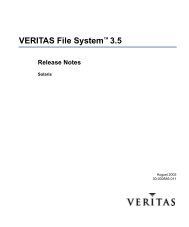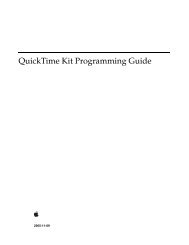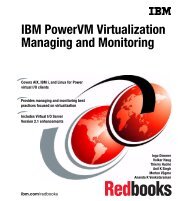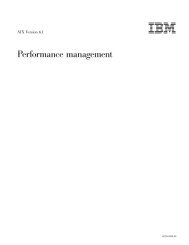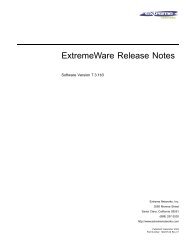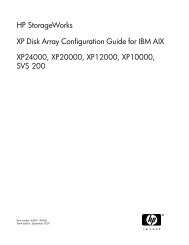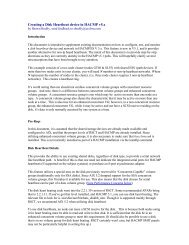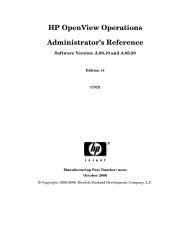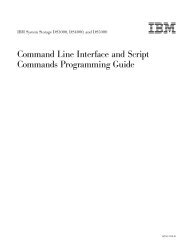HP-UX VxFS tuning and performance - filibeto.org
HP-UX VxFS tuning and performance - filibeto.org
HP-UX VxFS tuning and performance - filibeto.org
Create successful ePaper yourself
Turn your PDF publications into a flip-book with our unique Google optimized e-Paper software.
File system re<strong>org</strong>anization attempts to collect large areas of free space by moving various file extents<br />
<strong>and</strong> attempts to defragment individual files by copying the data in the small extents to larger extents.<br />
The re<strong>org</strong>anization is not a compaction utility <strong>and</strong> does not try to move all the data to the front on the<br />
file system.<br />
Note<br />
Fsadm extent re<strong>org</strong>anization may fail if there are not sufficient large free<br />
areas to perform the re<strong>org</strong>anization. Fsadm -e should be used to<br />
defragment file systems on a regular basis.<br />
Transaction journaling<br />
By definition, a journal file system logs file system changes to a “journal” in order to provide file<br />
system integrity in the event of a system crash. <strong>VxFS</strong> logs structural changes to the file system in a<br />
circular transaction log called the Intent Log. A transaction is a group of related changes that<br />
represent a single operation. For example, adding a new file in a directory would require multiple<br />
changes to the file system structures such as adding the directory entry, writing the inode information,<br />
updating the inode bitmap, etc. Once the Intent Log has been updated with the pending transaction,<br />
<strong>VxFS</strong> can begin committing the changes to disk. When all the disk changes have been made on disk,<br />
a completion record is written to indicate that transaction is complete.<br />
With the datainlog mount option, small synchronous writes are also logged in the Intent Log. The<br />
datainlog mount option will be discussed in more detail later in this paper.<br />
Since the Intent Log is a circular log, it is possible for it to “fill” up. This occurs when the oldest<br />
transaction in the log has not been completed, <strong>and</strong> the space is needed for a new transaction. When<br />
the Intent Log is full, the threads must wait for the oldest transaction to be flushed <strong>and</strong> the space<br />
returned to the Intent Log. A full Intent Log occurs very infrequently, but may occur more often if many<br />
threads are making structural changes or small synchronous writes (datainlog) to the file system<br />
simultaneously.<br />
Underst<strong>and</strong>ing your application<br />
As you plan the various attributes of your file system, you must also know your application <strong>and</strong> how<br />
your application will be accessing the data. Ask yourself the following questions:<br />
Will the application be doing mostly file reads, file writes, or both?<br />
Will files be accessed sequentially or r<strong>and</strong>omly?<br />
What are the sizes of the file reads <strong>and</strong> writes?<br />
Does the application use many small files, or a few large files?<br />
How is the data <strong>org</strong>anized on the volume or disk? Is the file system fragmented? Is the volume<br />
striped?<br />
Are the files written or read by multiple processes or threads simultaneously?<br />
Which is more important, data integrity or <strong>performance</strong>?<br />
How you tune your system <strong>and</strong> file systems depend on how you answer the above questions. No<br />
single set of tunables exist that can be universally applied such that all workloads run at peak<br />
<strong>performance</strong>.<br />
5



